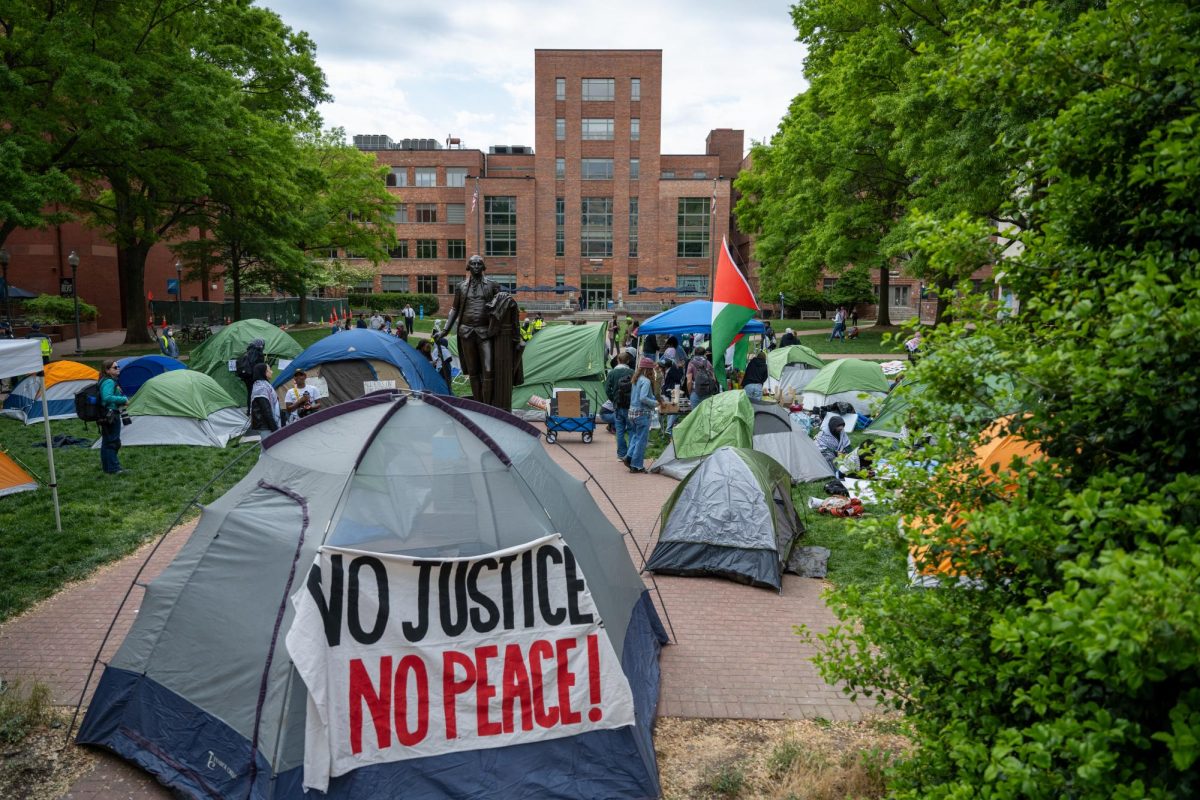Members of the GW community gathered Monday night at a local church to share their stories and emotions about the day the Berlin Wall fell, 20 years after the historic event.
The event – held at The United Church, or Die Vereinigte Kirche, a German church on the border of GW’s campus – commenced a weeklong series of events planned to celebrate the 20th anniversary of the Berlin Wall’s demise, which signified the end of a repressive era in German history. The ceremony was held in the United Church because it houses the “oldest German-speaking congregation in town,” said Pastor Bodo Schwabe, who delivered a greeting at the ceremony.
The service featured four speakers who each offered anecdotes from their time spent in Germany before and after the Berlin Wall fell Nov. 9, 1989. Edward Larkey, a professor at the University of Maryland-Baltimore County who studied in East Berlin, reflected on his experience in a place once hindered by economic depression and social oppression.
“People had feelings that their lives were crumbling around them,” Larkey said. “It was very invigorating to see that people wouldn’t deal with the deterioration of their city any longer.”
Sebastian Gr?fe, who grew up in Leipzig, Germany, was a teenager in 1989. Gr?fe said he would join his family in Monday night demonstrations to show his opposition to the communist regime. After the wall fell and the reunification of Germany began in the early 1990s, Gr?fe said his everyday life was changed in every way.
“Suddenly a new world opened,” Gr?fe said. “Suddenly journalists seemed to be doing their jobs. Suddenly we were able to shape our own environment. Suddenly we could meet politicians, ministers, and call for demonstrations.”
After the series of reflections, participants holding candles walked from the church through Kogan Plaza to Gelman Library, where an exhibition of photographs and propaganda posters from the German revolution were on display. Student volunteers and members from the GW German Club led the procession, carrying large banners painted with red, black and yellow German writing.
Junior Emily Sieg, a member of the German club, said the banners mimicked actual posters used by German demonstrators 20 years ago. Sieg said they tried to choose posters that fit modern themes, so that the ideas of German revolutionaries could apply to current issues. The three banners included the phrases, “Freedom for political prisoners!” and “Women: Half of the world and half of the politics!”
Sieg added that Monday’s event might make people more appreciative of the American political system.
“We don’t get what life was like under constant observation,” Sieg said. “The things we take for granted are things that didn’t always exist and that some people in the world don’t have.”
Sophomore Courtney Miller said she was fascinated by Monday’s service and the gallery exhibition that followed.
“I liked the fact that the information that was given was personal. There were a lot of different perspectives,” Miller said. “I was surprised more people didn’t come… I like looking at the photographs and the history behind them. It makes me want to know more.”
Gr?fe, who now works for the Heinrich B?ll Foundation promoting political education and activism worldwide, ended his reflection while emphasizing how many still suffer under tyrannical powers today.
“I come into contact with people [who] cannot enjoy freedom in their lives,” Gr?fe said. “The revolution isn’t over. It still goes on.”







